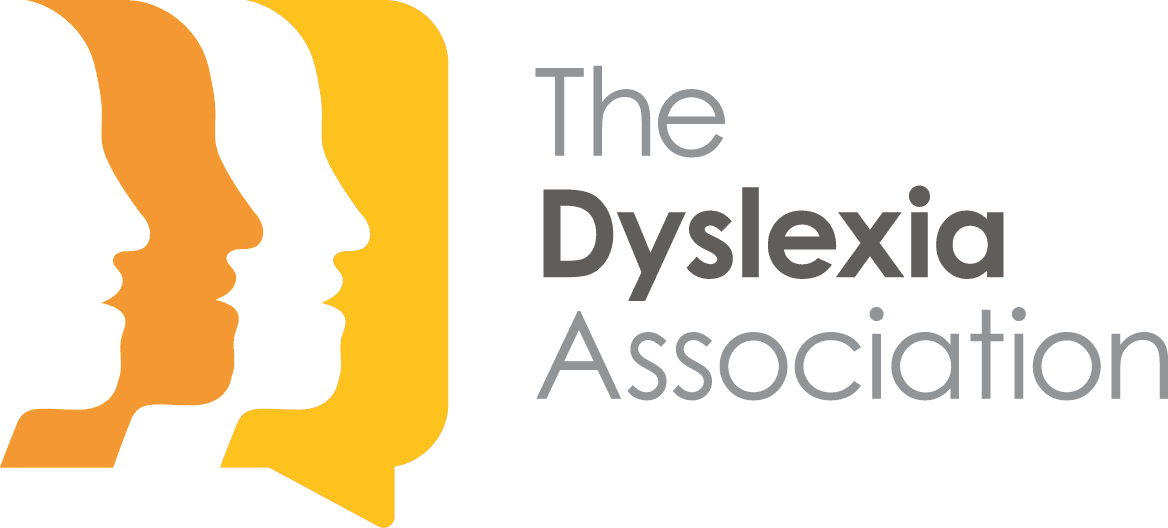Specific Learning Difficulties (SpLD) affect the way information is learned and processed. They are neurological (rather than psychological), usually run in families and occur independently of intelligence. They can have significant impact on education and learning and on the acquisition of literacy skills.
As with any disability, no two individuals experience the same combination of difficulties and some people may exhibit signs of more than one SpLD.
Some common characteristics of SpLDs:
- Memory difficulties.
- Organisational difficulties.
- Writing difficulties.
- Visual processing difficulties.
- Reading difficulties.
- Auditory processing difficulties.
- Time management difficulties.
- Sensory distraction: an inability to screen out extraneous visual or auditory stimuli.
- Sensory overload: a heightened sensitivity to visual stimuli and sound; an inability to cope with busy environments.
Information taken from British Dyslexia Association
By clicking on the sections below you can learn more about the different terms which are used when talking about SpLD’s
Dyslexia
- Dyslexia is one of a family of Specific Learning Difficulties.
- Many people who have dyslexia have strong visual, creative and problem solving skills.
- Dyslexia is not linked to intelligence but can make learning difficult.
- Dyslexia is a life-long condition which has a substantial effect on an individual’s day to day activities and is classed as a disability under the Equality Act 2010.
- Dyslexia varies from person to person and no two people will have the same set of strengths and weaknesses.
- It often co-occurs with related conditions, such as dyspraxia, dyscalculia and attention deficit disorder.
- Dyslexic individuals often have difficulty processing and remembering information, particularly
Dyspraxia or Developmental Coordination Disorder (DCD)
Two definitions:
1. Dyspraxia literally means ‘difficulty in carrying out an action’ and in the medical world the term specifically denotes difficulty with planning and executing movement. In the educational world, the definition is usually broadened to include difficulty with spatial and perceptual skills and sometimes also social skills.
2. The SpLD Test Evaluation Committee (STEC) DfES Guidelines, 2012 provides the following definition of Developmental Co-ordination Disorder/Dyspraxia: “Developmental Co-ordination Disorder (DCD), also known as Dyspraxia in the UK, is a common disorder affecting fine or gross motor co-ordination in children and adults. This lifelong condition is formally recognised by international organisations including the World Health Organisation. DCD is distinct from other motor disorders such as Cerebral Palsy and stroke and occurs across the range of intellectual abilities. Individuals may vary in how their difficulties present; these may change over time depending on environmental demands and life experience …. An individual’s co-ordination may affect participation and functioning of everyday life skills in education, work and employment. Children may present with difficulties with self-care, writing, typing, riding a bike and play as well as other educational and recreational activities. In adulthood many of these difficulties will continue, as well as learning new skills at home, in education and work, such as driving car and DIY. There may be a range or co-occurring difficulties which can also have serious negative impacts on daily life. These include social and emotional difficulties as well as problems with time management, planning and personal organisation and these may also affect an adult’s education or employment experiences”. Further information and advice can be found at The Dyspraxia Foundation website: https://www.dyspraxiafoundation.org.uk/
What is Dyscalculia?
Dyscalculia is a specific and persistent difficulty in understanding numbers which can lead to a diverse range of difficulties with mathematics. It will be unexpected in relation to age, level of education and experience and occurs across all ages and abilities.
Mathematics difficulties are best thought of as a continuum, not a distinct category, and they have many causal factors. Dyscalculia falls at one end of the spectrum and will be distinguishable from other mathematics issues due to the severity of difficulties with number sense, including subitising, symbolic and non-symbolic magnitude comparison, and ordering. It can occur singly but can also co-occur with other specific learning difficulties, mathematics anxiety and medical conditions.
(Taken from SASC / STEC Dyscalculia Working Group Nov 2020)
These difficulties are common with dyscalculia:
- a presence of difficulties in mathematics which are persistent and present from an early age.
- the mathematical difficulties are not caused by a lack of educational opportunities
- the degree of difficulty is evidenced to be below expectations for the individual’s age.
- a lack of understanding of numbers, or number concepts and how they relate to each other.
- individuals may rely on following processes which they do not understand and simple ways of working out
- a high level of anxiety
Dyscalculia is under studied and under resourced in comparison with dyslexia. However, it is estimated that dyscalculia is likely to occur in 3% – 6% of the population, and, unlike some other specific learning difficulties, is as likely to affect females as males.
What are the signs of Dyscalculia?
Dyscalculia is not the same as maths anxiety, but people with dyscalculia can react strongly to activities involving mathematics, for instance they may get upset or frustrated when playing board games.
Keep in mind that all people can occasionally struggle with maths. Those with dyscalculia will struggle to a greater extent than their peers, and their difficulties will continue over time.
Use the following checklists to keep an eye on any potential signs of dyscalculia and then discuss your concerns with your / your child’s educational establishment or your employer.
Pre-school
- Has trouble learning to count
- Struggles to connect a number to an object, such as knowing that “3” applies to groups of things like 3 cakes, 3 cars, or 3 friends
- Struggles to recognize patterns, like smallest to largest or tallest to shortest
Primary School
- Has difficulty learning and recalling basic number facts such as number bonds, e.g. 6 + 4 = 10.
- Still uses fingers to count instead of using more advanced strategies (like mental maths)
- Poor understanding of the signs +, -, xx and x or may confuse these mathematical symbols
- Struggles to recognise that 3 + 5 is the same as 5 + 3 or may not be able to solve 3 + 26 ‒ 26 without calculating
- Has trouble with place value, often putting numbers in the wrong column.
- May not understand maths language or be able to devise a plan to solve a maths problem.
- Finds it difficult to understand maths phrases like greater than and less than
- Has trouble keeping score in sports or games
- Has difficulty working out the total cost of items and can run out of money
- May avoid situations that require understanding numbers, like playing games that involve maths.
Secondary School
- Struggles to understand information on charts and graphs.
- Has trouble finding different approaches to the same maths problem, such as adding the length and width of a rectangle and doubling the answer to solve for the perimeter (rather than adding all the sides).
- Struggles to learn and understand reasoning methods and multi-step calculation procedures
- Has trouble measuring items like ingredients in a simple recipe or liquids in a bottle.
- Lacks confidence in activities that require understanding speed, distance and directions, and may get lost easily.
- Has trouble applying maths concepts to money, such as calculating the exact change
Adults
Typical symptoms include:
- difficulty counting backwards
- difficulty remembering ‘basic’ facts
- slow to perform calculations
- weak mental arithmetic skills
- a poor sense of numbers & estimation
- Difficulty in understanding place value
- Addition is often the default operation
- High levels of mathematics anxiety
Source: Maths Explained
The diagnosis of dysgraphia is currently a contentious issue, although the term is becoming more common. It has been suggested that dysgraphia belongs to other learning differences such as dyslexia and dyspraxia. However it is not recognised as a learning difference within the SEN code of practice.
There isn’t an agreed definition of dysgraphia, therefore it can’t be diagnosed as such. Although it is widely acknowledged that some children and adults do have significant struggles with their handwriting, and not just writing but getting their ideas from their head to the paper.
At TDA we have decided to define problems with writing as ‘an impairment in the process of handwriting’ in preference to the term dysgraphia.
The National Handwriting Association has a lot of useful information
Now, we need to talk about Attention Deficit and Attention Deficit Hyperactivity Disorder ADHD……
ADHD is a neurodevelopmental condition and it often co-occurs with other specific learning difficulties, and especially dyslexia.
The Dyslexia Association receives many calls from parents, who feel that they are not getting enough support for their child in school. Parents understand their children best and are often the first to realise that something is not quite right.
We always recommend to speak initially with the school SENCO (Special Educational Needs Coordinator), they may have also noticed some learning differences and they can often suggest further screening in school.
We believe that it is really important to try and identify a child’s learning differences because if these are understood then the right intervention can be used in school. These differences might be attributed to dyslexia, or they could be co-occurring or overlapping differences such as dyspraxia, dyscalculia or ADHD, and these neurodivergent labels do not have to have negative connotations.


